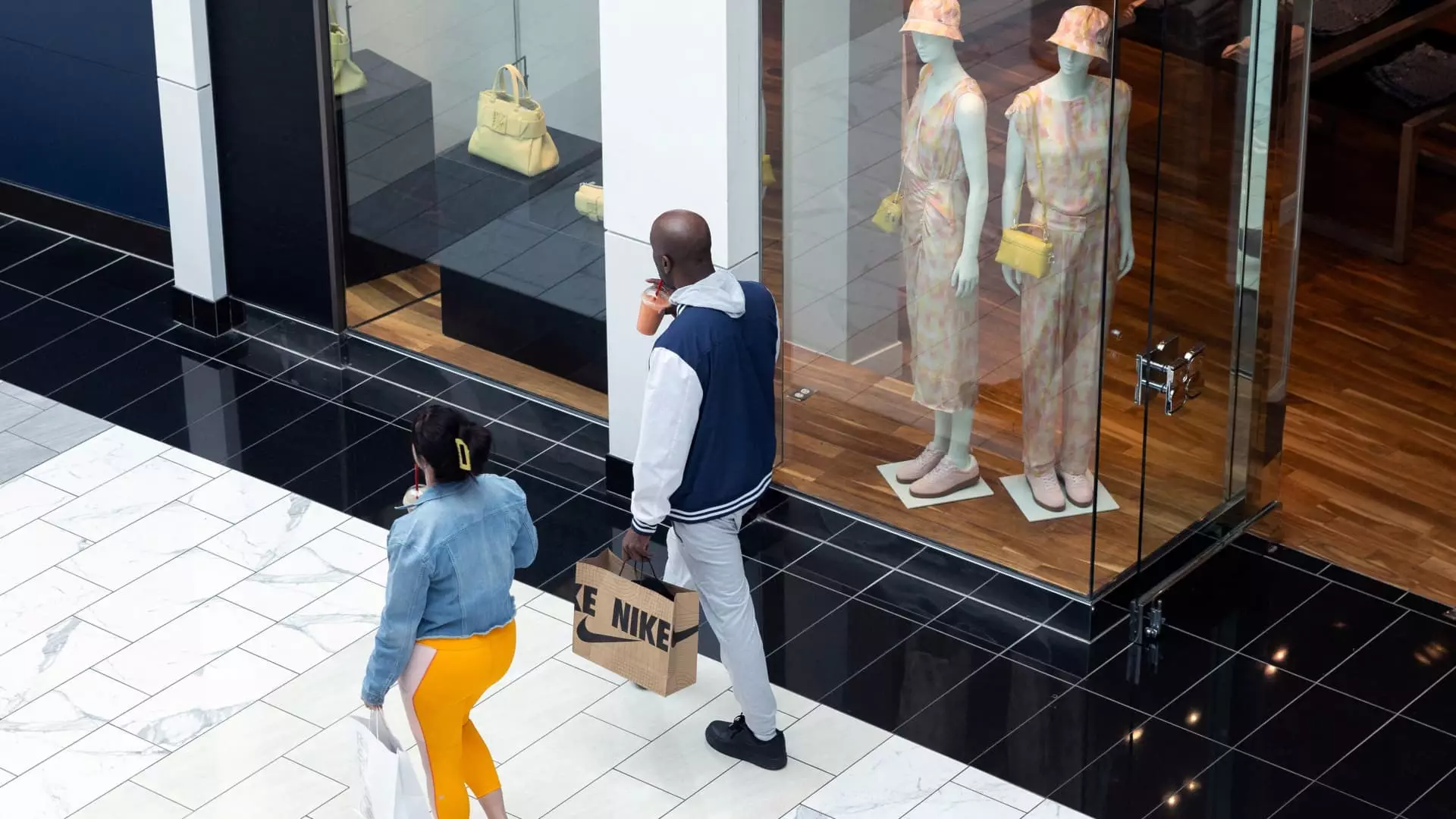Recent evaluations of the American economy reveal a jarring paradox: while a staggering 73% of U.S. adults report feeling financially stressed, consumer spending remains unexpectedly robust. In an environment marked by uncertainty, particularly due to tariff wars and an impending recession, this dual narrative raises more questions than it answers. How can such a high level of financial concern coexist with continuous consumer spending? It is crucial to dissect the underlying factors at play, as they could portend significant repercussions for the future economic landscape.
What stands out is the rise in panic buying—a phenomenon seemingly fueled by shoppers’ fears of imminent price hikes due to tariffs. During just the past couple of months, consumer spending has outperformed expectations, suggesting that when faced with immediate concerns, people react not with retreat but with intensified consumption. This contradiction paints a troubling picture of what it means to be financially stressed but still engage in spending behaviors that keep the economy afloat. Could it be that Americans are resigning themselves to a reality where financial uncertainty has become normalize, leading to consumption as a coping mechanism rather than a calculated economic strategy?
The Tariff Dilemma: A Self-Inflicted Wound
Tariffs imposed by the Trump administration on various imports are not merely a negotiating tactic in international trade; they have become a significant domestic issue. With predictions from J.P. Morgan enhancing the likelihood of a recession to 60%, the economic climate feels precariously unstable. In speeches and reports, Federal Reserve Chair Jerome Powell has underscored consumer spending as the driving force behind the economy. Yet, paradoxically, it is precisely this spending that is being jeopardized by ongoing tariff policies.
Businesses and households are increasingly feeling the pinch of rising inflation, resulting from these tariffs, leading to declining consumer sentiment. The Conference Board’s expectations index fell to its lowest in over a decade, and when consumer confidence dips, the cycle of spending is at risk. This chain reaction leads to a much larger issue: consumers are caught in a cycle where they must balance immediate needs against impending economic realities, ultimately fearing a future where their purchasing power could diminish.
Behavioral Economics: The Irony of Consumption
Behavioral economics provides useful insights into why consumers may continue to spend even when they know it is irrational given their circumstances. Richard Thaler’s concept of “mental accounting” could explain why Americans compartmentalize their spending, ignoring broader economic realities to maintain a semblance of normalcy in their daily lives. The inertia in spending habits presents a fascinating contradiction: even when statistical indicators suggest a looming economic downturn, the preference for routine often prevails.
Sasha Indarte, a finance professor, aptly highlights that this “preference for sameness” can lead to a delayed reckoning. As financial constraints intensify, households will be forced to adjust their spending significantly, prompting a ripple effect that could spiral into a broader economic contraction. Yet, until that shock occurs, consumers may remain blissfully—or perhaps willfully—ignorant of their precarious situation.
The Risk of Complacency in Consumer Spending
The irony of the current economic situation is that high consumer spending, often considered a sign of economic health, has become a form of complacency. Financial analysts express concern that even a small contraction in spending could exponentially escalate into a more significant issue. One person’s spending translates to another person’s income, creating interdependence that could unravel if consumers’ confidence dwindles.
The situation reflects a house of cards: when consumers eventually face the reality of their financial limitations, a sharp decline in spending could initiate a domino effect. While currently buoyant, consumer spending is deeply sensitive to changing conditions, and if households feel cornered, the economic ramifications could be severe.
Ultimately, policymakers must tread carefully, as the implications of tariffs and trade wars are not merely focused on foreign relations—domestic stability hangs in the balance. As much as we wish for resilient consumer behavior, the continued financial stress that is visible in the lives of so many Americans cannot be ignored.
What remains uncertain is how much longer individuals will sustain their current spending habits, tethered to an economic environment fraught with volatility. The invisible pressure of financial stress is palpable, and when it bursts, the prosperity we currently enjoy may vanish just as rapidly.

